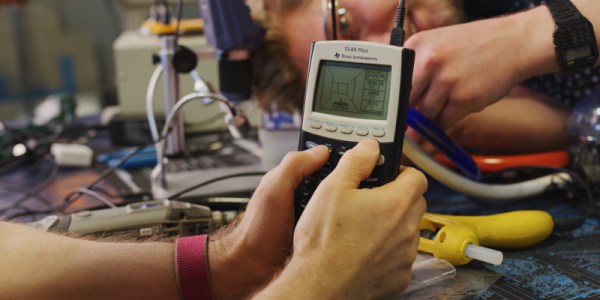The TI-84 is an enduring classic – the calculator that took many through high school, college and beyond. A hacker’s favorite, it’s been pushed to the limits in all sorts of ways. The crew at [Linus Tech Tips] decided to join in the fun, overclocking a TI-84 Plus and adding water cooling to boot.
The TI-84 uses a simple resistor capacitor circuit to generate its clock, making it overclocking it a cinch. By changing the resistor value in the circuit, the clock can be made to run faster. The team have some issues with pads delaminating from the PCB, but manage to sub in a trimpot which lets the clock be changed on the fly. A boost of 10MHz over stock gets the calculator operating at 26MHz, with notably quicker performance in the TI port of Doom 2. Without accurate measurement of CPU temps, it’s hard to say whether watercooling the calculator is justified. However, the team do a great job of entirely overengineering the solution, with a custom-made cooling block hooked up to a massive spherical reservoir.
With the stability issues inherent in overclocking, and the unwieldy watercooling tubes, it’s not a good hack in the practicality sense. It is, however, quite amusing, and that’s always worth something. TI calculators have long been targets for hackers, and you can even get them online if you so desire. Video after the break.
Continue reading “Overclocking And Watercooling The TI-84, Just Cause”













